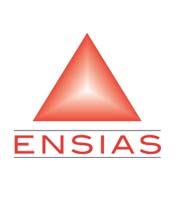- Accueil
-
L'Ecole
-
FORMATIONS
-
FORMATION INGENIEUR
-
Nouvelles filières offertes
- Ingénierie Intelligence Artificielle (2IA)
- Smart Supply Chain & Logistics (2SCL)
- Business Intelligence & Analytics (BI&A)
- Cybersécurité, Cloud et Informatique Mobile (CSCC)
- Data and Software Sciences (D2S)
- Génie de la Data (GD)
- Génie Logiciel (GL)
- Ingénierie Digitale pour la Finance (IDF)
- Smart System Engineering (SSE)
- REGLEMENT DES ETUDES DE L’ENSIAS CYCLE INGENIEUR
-
Nouvelles filières offertes
-
FORMATION INGENIEUR
- FORMATION CONTINUE
-
Recherche
- INTERNATIONAL
- ENTREPRISES
- VIE ESTUDIANTINE
- BIBLIOTHEQUE
LES DERNIÈRES INFORMATIONS
On the value of deep learning for diagnosing diabetic retinopathy
| Titre | On the value of deep learning for diagnosing diabetic retinopathy |
| Publication Type | Journal Article |
| Year of Publication | 2022 |
| Authors | Lahmar, C, Idri, A |
| Journal | Health and Technology |
| Volume | 12 |
| Pagination | 89-105 |
| Mots-clés | Article, Binary classification, comparative effectiveness, controlled study, Convolutional neural network, Deep learning, densenet201, Diabetic retinopathy, diagnostic accuracy, diagnostic test accuracy study, diagnostic value, human, inception resnet v2, inception v3, k fold cross validation, mobilenet v2, residual neural network, resnet50, sensitivity and specificity, vgg16, vgg19 |
| Abstract | Diabetic retinopathy (DR) is one of the main causes of vision loss around the world. The early diagnosis of this disease can help in treating it efficiently. Deep learning (DL) is rapidly becoming the state of the art, leading to enhanced performance in various medical applications such as diabetic retinopathy and breast cancer. In this paper, we conduct an empirical evaluation of seven convolutional neural networks (CNN) architectures for an automatic binary classification of the referable diabetic retinopathy; the DL architectures (Inception_ResNet_V2, Inception_V3, ResNet50, VGG16, VGG19, MobileNet_V2 and DenseNet201) were evaluated and compared in terms of accuracy, sensitivity, specificity, precision and F1-score using the Scott Knott test and the Borda count voting method. All the empirical evaluations were over three datasets: APTOS, Kaggle DR and the Messidor-2, using a k-fold cross validation method. Experiments showed the importance of using deep learning in the classification of DR since the seven models gave a high accuracy values. Furthermore, DenseNet201 and mobileNet_V2 were the top two performing techniques respectively. DenseNet201 provided the best performance for the Kaggle and Messidor-2 datasets with an accuracy equal to 84.74% and 85.79% respectively. MobileNet_V2 provided the best performance in the APTOS dataset with an accuracy equal to 93.09%. As for the ResNet50, Inception_V3 and Inception_ResNet_V2, they were the worst performing compared to the other DL techniques. Therefore, we recommend the use of DenseNet201 and MobileNet_V2 for the detection of the referable DR since they provided the best performances on the three datasets. © 2021, IUPESM and Springer-Verlag GmbH Germany, part of Springer Nature. |
| URL | https://www.scopus.com/inward/record.uri?eid=2-s2.0-85116986540&doi=10.1007%2fs12553-021-00606-x&partnerID=40&md5=0a388e86c6b6b49bc1f026a6defbfa2d |
| DOI | 10.1007/s12553-021-00606-x |
Revues:
LIENS UTILES
Localisation
Contactez-nous
ENSIAS
 Avenue Mohammed Ben Abdallah Regragui, Madinat Al Irfane, BP 713, Agdal Rabat, Maroc
Avenue Mohammed Ben Abdallah Regragui, Madinat Al Irfane, BP 713, Agdal Rabat, Maroc
![]() Télécopie : (+212) 5 37 68 60 78
Télécopie : (+212) 5 37 68 60 78
![]() Secrétariat de direction : 06 61 48 10 97
Secrétariat de direction : 06 61 48 10 97
Secrétariat général : 06 61 34 09 27
Service des affaires financières : 06 61 44 76 79
Service des affaires estudiantines : 06 62 77 10 17 / n.mhirich@um5s.net.ma
CEDOC ST2I : 06 66 39 75 16
Résidences : 06 61 82 89 77
- Compteur de visiteurs:640,159
Education - This is a contributing Drupal Theme
Design by WeebPal.
Design by WeebPal.



































